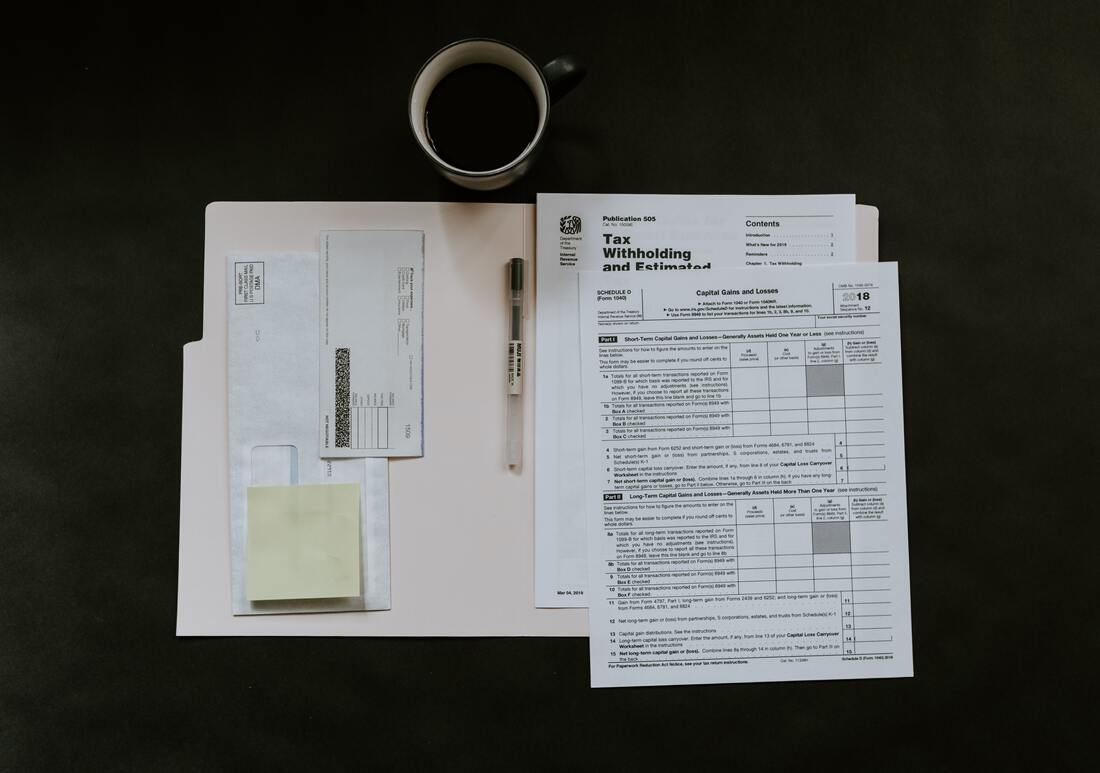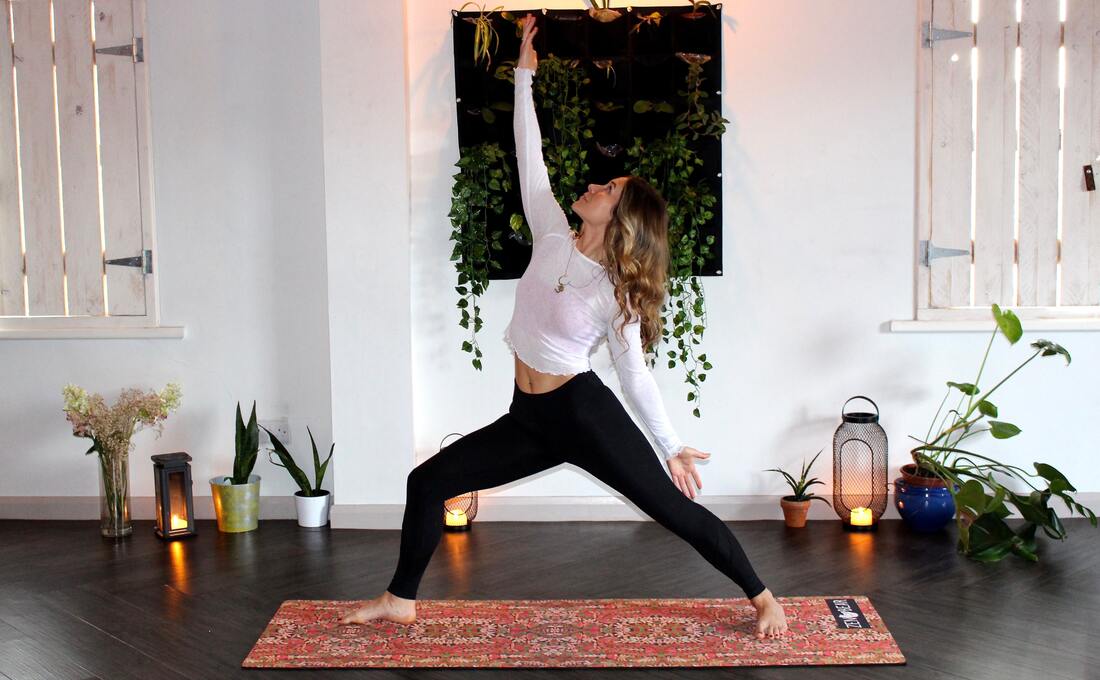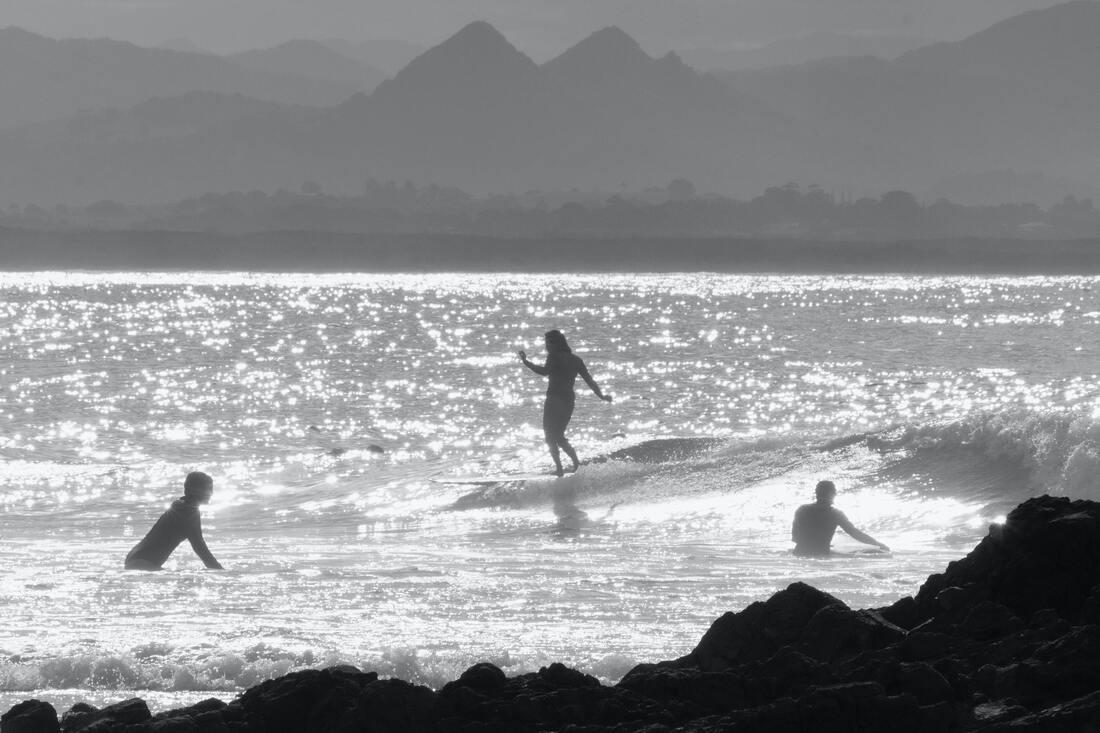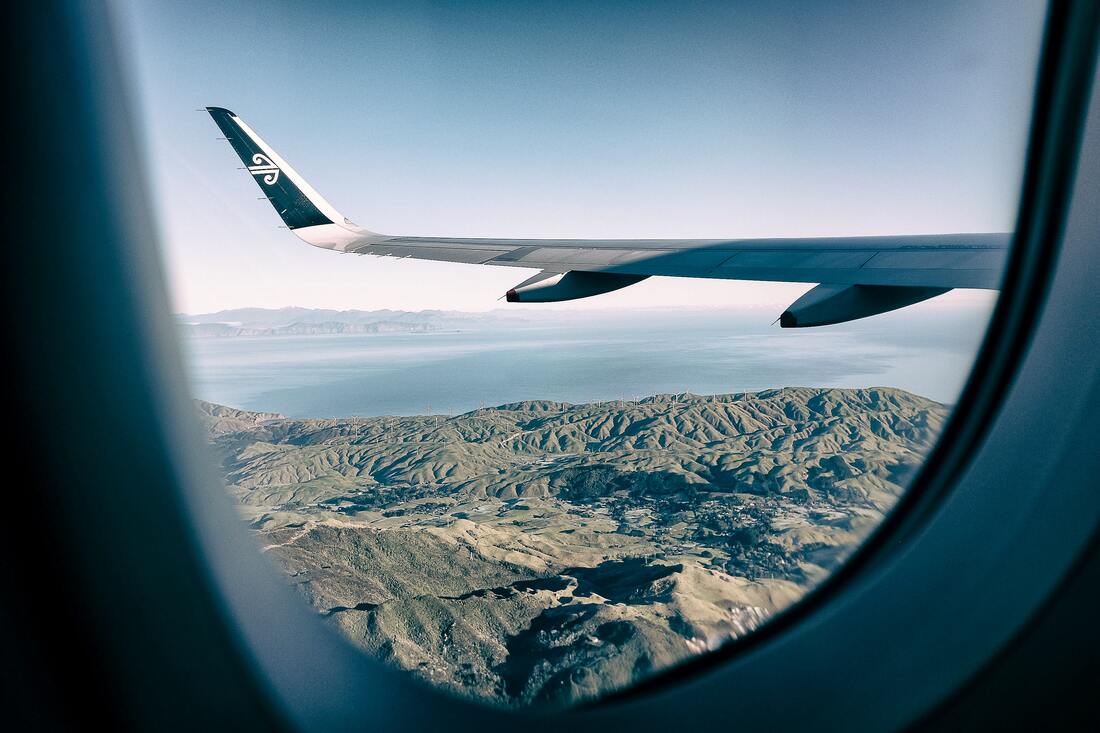Do international students in Australia pay tax?The duration of your student visa determines whether you are classed as an Australian resident for tax purposes or a non-Australian resident for tax purposes. You will be considered an Australian resident for tax purposes by the ATO (Australian Tax Office) if you meet the below criteria:
If you are a temporary resident, you need to declare income you make in Australia plus any income you earn from employment or services performed overseas during your temporary residency. Please note: If you are on a Working Holiday Visa or were on a Working Holiday Visa between July 2020 to June 2021, you will be taxed differently. If you are on the Temporary Activity visa (subclass 408) due to the Covid-19 pandemic then you will also be taxed differently. You will need to contact ATO for further details. Why do I need to pay my taxes in Australia?Most international students need to lodge a tax return every financial year. This will determine if you have paid enough or too much tax, whether or not you need to pay the Medicare levy and if you are eligible to receive any tax offsets. If you have paid more tax than necessary, you will be given a refund. If you haven’t paid enough tax, then you will receive a tax bill. How much tax do international students have to pay in Australia?If your taxable income sits at $18,200 or below, you will be entitled to a tax free threshold and won’t have to pay any tax for the year ending on June 30. If you are an Australian resident for tax purposes then you won’t pay tax on the first $18,200 you earn as salary, wages and subcontractor’s income. After this, your tax will start at 19% but will increase as your income, earned either as salary, wages or subcontractor’s fees, increases. You are also entitled to the benefits of the tax system such as lower tax rates than a foreign resident, tax offsets and the tax-free threshold. Remember: If you earned $18,200 or less and your employer deducted income tax, then you are entitled to apply for a refund. What tax expenses can I claim?You can reduce your total taxable income through deductions which are directly related to earning an income. There are two types of expenses that international students can claim: personal and work-related deductions. In order to do so, you must be able to provide relevant receipts, invoices and bank statements. Below, find a list of expenses that can be deducted:
Do I need an accountant to do my taxes in Australia?No, you can lodge your tax return using ATO’s myTax system but it is highly recommended that you seek guidance. Although you will need to pay a small fee, an account will ensure that you include all of the deductions that you are eligible for and they will double check the accuracy of your returns. You can even claim the cost of your tax agent in the next financial year. If you need further advice, please don’t hesitate to get in touch with our expert team. What do I need to file my tax return in Australia?International students need a tax file number (TFN) in order to lodge an income tax return. A (TFN) is your personal reference number. You can apply for your TFN free of charge through the Australian Tax Office and the process should only take around 20 minutes. You will need to provide your personal details, your passport or travel document number and a postal address in Australia. You can find further information on applying for your TFN on our website. What if I'm self-employed?If you’re freelance or provide your own services, then you will also need to apply for an Australian business number (ABN). You can apply on the Australian Tax Office website or can lodge a form by mail. You will be asked to provide details about your business, activities and identity. More can be found on ATO's website. What do I need to do before beginning my tax return?If your employer is paying your wages through Single Touch Payroll (STP) then you can access your income statement information on ATO via myGov. If not, your employer should give you a payment summary. If you leave a job during the financial year, then make sure to ask your employer for your payment summary when you leave. If they have been reporting your tax and super information through STP then they will need to complete a finalisation declaration. I'm returning to my home country, do I still need to lodge a tax return?If you worked during your time in Australia then you will most likely need to lodge an Australian tax return after June 30. You can do so online after leaving the country. If you are leaving permanently, you may be eligible to lodge your tax return early. In this care, you must lodge a paper return which is likely to take longer to process. How do I claim my super?Superannuation, commonly referred to as ‘super’, is a way of saving money for retirement in Australia. If you are working a certain number of hours for your employer, you may qualify for a super contribution from your workplace.
Whilst you are living in Australia, your superannuation contributions must stay in your fund. You may be able to claim your super after you leave the country if you meet the below requirements:
For more information on your superannuation fund, head over to our expert blog. If you have any questions about your tax return, please don’t hesitate to get in touch with the Study Online Australia team.
2 Comments
Wander around Bondi or Byron Bay and you’ll find its residents catching the sunrise, nattering over coffee and heading down to the beach with a yoga mat wedged beneath their arm. As one of Australia’s most popular pastimes, yoga studios have cropped up in every corner of the country and it’s not hard to see why. Not only is the ancient practice a great way to keep fit: it’s an opportunity to meet new people, boost those endorphins and carve time for yourself on the mat. Below, find out everything you need to know about studying yoga in Australia from entry requirements to future career paths. What are the entry requirements for Certificate IV (105455G) in Yoga Teaching?In order to apply for Certificate IV in Yoga Teaching, you need to meet the following criteria:
Find out more about English courses available in Australia on our website or contact the team and we can organise an English test through our network of education providers. Although you do not need to have any previous experience in yoga, it’s strongly advised that you have practiced before and that you have a good level of fitness. If you are interested in studying yoga, our team can organise a trial day so that you can get a feel for the course. What will I learn studying Certificate IV in Yoga Teaching (105455G)?Certificate IV in Yoga Teaching will vary depending upon the college you choose but most courses will enable students to learn the basic principles of yoga, warm up and warm down routines, breathing practices and how to incorporate anatomy and physiology into yoga teaching. The aim of the course is to prepare students to become professional yoga teachers at a basic to intermediate level so that they can run group workshops or private classes. Certificate IV in Yoga Teaching will cover how to do the following:
You will qualify the course with a first aid certificate and will be prepared for further study through the development of study and research skills, communication development and time management. After attainment, you will be able to register as a Level 2 (intermediate) accredited teacher with the International Yoga Teachers Association. What career path can I take after completing my Certificate IV in Yoga Teaching (105455G)?Studying Certificate IV in Yoga Teaching will give students the chance to become a yoga teacher in gyms and studios around the world. There is also the opportunity to go on to become a yoga studio manager, owner or project coordinator. Studying Certificate IV in Yoga Training will enable students to progress to Diploma of Yoga Teaching if they desire. What are the entry requirements for Diploma of Yoga Teaching (098602G)?In order to apply for your Diploma of Yoga Training, you need to meet the following criteria:
As yoga teaching requires teachers to assist students with their practice, you must be comfortable manually helping others. It is also advised that you have good communication skills, an interest in helping others to learn yoga and patience. What will I learn studying my Diploma of Yoga Teaching (098602G)?Some students may decide to study for their Diploma of Yoga Teaching after Certificate IV. This is a great opportunity to venture further into the practice and will enable students to go on to become specialised teachers. Courses differ but you will learn how to do the below at most institutions:
What career path can I take after completing my Diploma in Yoga Teaching (098602G)?After studying your Diploma in Yoga Teaching, you will have the opportunity to venture further into the yoga industry. For example, you may wish to become a yoga teacher who specialises in special needs or chronic conditions. During your diploma training, you will learn how to adapt your classes to suit different needs and will be able to offer a deeper practice which incorporates breathwork and meditation. Can I do an Advanced Diploma in Yoga in Australia?Yes, you can choose from Advanced Diploma of Yoga Teaching, Advanced Diploma of Yoga Therapy and Advanced Diploma of Holistic Classical Yoga Practices (099897B). What will I learn while studying my Advanced Diploma in Yoga Teaching (0100559)?Students wishing to take a deeper dive into yoga and to expand upon their knowledge may wish to study at Advanced Diploma level. Topics covered will vary depending upon which course you choose but most colleges will cover the following:
What career path can I take after completing my Advanced Diploma in Yoga Teaching?You do not need to study Advanced Diploma in Yoga in order to become a yoga teacher or to run your own studio but you will gain further knowledge, skills and experience which will prove beneficial in the future. What do I need to study Yoga Teaching?To study Yoga Teaching, you are required to bring the below:
Will these qualifications be recognised in my home country?These qualifications are part of the Australian Qualification Framework and most countries accept them, especially European and North American countries. But we highly recommend checking that your home country accepts the qualification before choosing your course. If you are unsure, a member of our team would be happy to help. Where can I study yoga in Australia?You can study yoga in a number of colleges across Australia situated in Sydney, Perth, Brisbane, Byron Bay and Melbourne. As there are only 13 courses to choose from, it’s important to check the location of your chosen course before making a decision. You can easily search for courses on offer in your state of choice using the CRICOS search tool. Most colleges offer monthly intake, quarterly intake or intake per semester (February, July). What does the timetable look like for yoga students?Yoga students are expected to attend face to face classes, both theoretical and practical, alongside self-paced e-learning. Generally speaking, you should expect to attend class for a minimum of 2.5 full days per week. The rest of your time can be dedicated to self-study and work. How long does a course in yoga take?Course lengths will vary slightly depending upon the college. Below, we have provided an approximate guide to course timelines.
Please make sure to always check the course lengths offered by each education provider carefully before applying.
There is also the option to package your yoga course or diploma with different subjects such as fitness. If you need assistance choosing a package, please contact us today for free advice and support. How long will my student visa last? How long do I need OSHC? These are amongst some of the most common questions the Study Online Australia team receives. Admittedly, it can all prove a little confusing and that’s why it’s always better to apply for your student visa through an experienced agency - such as ourselves! Below, find out everything you need to know about student visa and OSHC lengths. How long should my OSHC last?As discussed in a previous blog post, OSHC is a mandatory condition of your student visa so must last for the duration of your course at minimum. If you do not maintain adequate arrangements for health insurance for the duration of your stay in Australia, your student visa will be cancelled. Nib OSHC provides cover for the costs of medical and hospital care for international students in Australia. You have the option to purchase a single policy that covers you only or a family policy which provides health insurance for you, your partners and any dependent children under 18 if they live in Australia with you and are listed on your student visa. If you apply for your student visa through Study Online Australia, we will organise OSHC on your behalf through our partnership with nib. You can find further information on pricing and what Nib covers on our website. How long will my student visa last in Australia?The student visa (Subclass 500) may allow you to remain in Australia for up to 5 years for the purpose of full-time study at an educational institution. Your student visa length is determined by your course length. You may be granted additional time at the end of your course depending upon this. When you apply for your student visa, the expiry date of your Overseas Student Health Cover (OSHC) will also be considered. In order to be granted extra time, students must have OSHC in place for the same period. As explained on the official Australian Government website, if your course is a year in length ending August 30 then you will be eligible for a student visa up until October 30, provided you have OSHC in place to that date. If you apply onshore, then your OSHC must cover you from the student visa lodgement date, for the duration of your studies and for the whole of your study period and additional time which may be granted at the end of your course - depending upon its length. If you apply offshore, then your OSHC must cover you from your arrival date in Australia, for the duration of your studies and any additional time which may be granted at the end of your course - depending upon its length.
It’s very important to consider the length of your student visa when deciding how much OSHC to purchase, as your visa end date cannot be changed once granted. You can find further information on the length of stay for student visas on the official Australian Government website. Why choose Study Online Australia?Applying for a student visa for the first time can prove daunting with the possibility of making preventable mistakes. Our expert team led by director Pavla Hannan, who were all once international students themselves, will apply for OSHC on your behalf before lodging your student visa application.
We are fully funded by the educational sector in Australia so you don't need to pay a penny for our services. If you need help applying for a student visa or have any questions about OSHC, please don’t hesitate to get in touch with the Study Online Australia team. International students may feel far from home but Australia has proven to be one of the greatest corners of the earth to ride out the Covid-19 pandemic. Although a European summer may be off the cards, we’re incredibly lucky to have the opportunity to travel across the ditch. The trans-Tasman bubble opened on April 18 and allows those already based in Australia and New Zealand to travel freely between the sister countries. But with Covid-19 travel restrictions changing everyday, it can prove difficult to keep up! That’s why the Study Online Australia team has done the hard work for you. We’re staying on top of the latest travel alerts, quarantine rules and all things bubble related so you don’t get caught out on your next trip. Below, find out everything you need to know about travel between Australia and New Zealand during the Covid-19 pandemic. What is the trans-Tasman bubble?The trans-Tasman bubble allows travellers to travel freely between Australia and New Zealand without having to quarantine on arrival or departure. When is the best time to travel to New Zealand?A large number of travellers flock from around the world to visit New Zealand throughout the year but the trans-Tasman bubble is perfect timing for those seeking a winter getaway. Renowned for its mountainous landscape, skiing is one of the country’s most beloved sports with Queenstown and Wanaka stealing the top spot with the most famous ski resorts including: The Remarkables, Coronet Peak Cardrona and Treble Cone. There’s plenty to do when you’re not tumbling down the slopes too. Famed for being adrenalin junkies, surfing, kayaking, bungee jumping and hikes are also on offer in this magic corner of the hemisphere. When can I fly from New Zealand to Australia?Now! The Trans-Tasman Bubble is finally open which means international students are free to travel between the two countries quarantine free. You do not need to apply for a travel exemption in order to do so but must meet the below requirements. To travel from Australia to New Zealand:
Despite the excitement of being able to travel once more, it is highly recommended that you do so with caution. Covid-19 outbreaks can occur at any time and quarantine free travel arrangements can be paused at any time without notice. So make sure to be prepared for the possibility of an extended stay or disruption to your travel plans. At the time of writing this (June 1), there is currently a travel pause from Victoria to New Zealand. If you were in Victoria from 7.59pm on May 25 then you cannot travel to New Zealand from anywhere in Australia until further notice. We will update this once further information has been announced. Further information on travelling to New Zealand can be found on the official Australian Government website. Can I travel to Australia right now?Yes, you can travel from New Zealand to Australia if you have been in the country for 14 days or more. To travel from New Zealand to Australia:
You can find further information on travelling to Australia from New Zealand on the official government website. Returning to New Zealand from AustraliaYou do not need to quarantine after travelling to Australia unless you have visited a listed hotspot or travel restrictions change so make sure to keep up to date with the latest announcements while visiting Australia. What are the Australia and New Zealand travel bubble rules?There are strict rules in which travellers must follow when travelling between Australia and New Zealand:
Will the trans-Tasman travel bubble include other nations soon?Hopefully. There have been talks that destinations such as Singapore, Fiji and Tonga will eventually become a part of the bubble. New Zealand and Cook Islands formed a travel bubble on May 17 but those visiting from Australia must travel through New Zealand in order to get there. Handy Covid-19 travel apps to download before you flyIt’s important to stay informed whilst travelling during this time. So we recommend downloading the COVIDSafe App and the Coronavirus Australia App to check into venues and keep up to date with government advice.
If you have any questions about travelling between Australia and New Zealand, please don’t hesitate to reach out for free advice. You can also find further information on student visa Covid-19 restrictions on our website. |
AuthorPavla, The Director Archives
August 2022
Categories |
WE'RE INDUSTRY RECOGNISED
Study Online Australia Pty Ltd
Skype Name: studyonlineaustralia ; Contact Number: +61 410 458 847
© Copyright 2023
All rights reserved
PO BOX 5190, Greystanes, NSW 2145 Australia ABN 20 159 449 699
















 RSS Feed
RSS Feed


